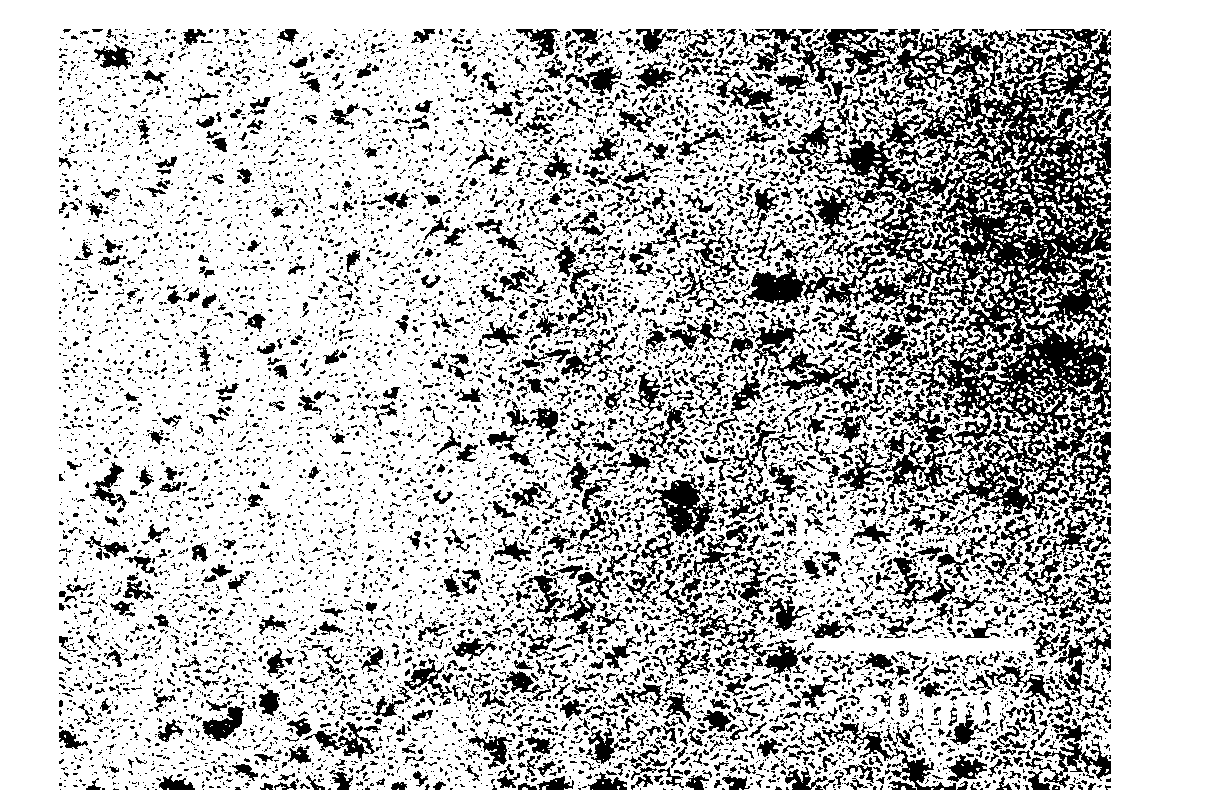Quantum-dot-based method for carrying out in-situ and real-time detection on heavy metal ions in cells
A technology for real-time detection of heavy metal ions, used in material excitation analysis, fluorescence/phosphorescence, etc., can solve problems such as inappropriate real-time detection of mercury and copper ions, inability to describe the distribution and dynamic changes of mercury and copper ions, and achieve fluorescence stabilization time. Long, easy-to-operate effect
- Summary
- Abstract
- Description
- Claims
- Application Information
AI Technical Summary
Problems solved by technology
Method used
Image
Examples
Embodiment 1
[0034] The method for in situ and real-time detection of mercury ions in dog kidney cells based on a quantum dot-labeled cell system comprises the following steps:
[0035] 1. Prepare 0.0005mol / L carboxymethyl chitosan-CdTe quantum dot solution:
[0036] Use a pipette to pipette 2.5 mL of 0.002 mol / L carboxymethyl chitosan-CdTe quantum dot solution into a sterilized 10 mL volumetric flask, add high-purity water (resistivity greater than 18 MΩ·cm) to constant volume, and set aside. The selected carboxymethyl chitosan-CdTe quantum dot fluorescent probe is formed by self-assembly of carboxymethyl chitosan and CdTe quantum dots in the water phase through electrostatic complexation, covalent bonding, chelation, etc. Good water solubility and biocompatibility; (Carboxymethyl chitosan-CdTe quantum dots are self-made, the brief process of preparation is as follows: CdCl 2 Solution and thioglycolic acid solution were mixed evenly, and then the pH value was adjusted with NaOH solution ...
Embodiment 2
[0048] The method for in situ and real-time detection of copper ions in dog kidney cells based on a quantum dot-labeled cell system comprises the following steps:
[0049] 1. Prepare 0.0001mol / L carboxymethyl chitosan-CdTe quantum dot solution:
[0050] Use a pipette to pipette 0.5 mL of 0.002 mol / L carboxymethyl chitosan-CdTe quantum dot solution into a sterilized 10 mL volumetric flask, add high-purity water (resistivity greater than 18 MΩ·cm) to constant volume, and set aside. The selected carboxymethyl chitosan-CdTe quantum dot fluorescent probe is formed by self-assembly of carboxymethyl chitosan and CdTe quantum dots in the water phase through electrostatic complexation, covalent bonding, chelation, etc. Good water solubility and biocompatibility;
[0051] 2. Culture of dog kidney cells:
[0052] The dog kidney cells (MDCK) in the T25 cell culture flask were overgrown and in good growth state were digested with 0.05% volume ratio of EDTA-trypsin into a single-cell susp...
PUM
| Property | Measurement | Unit |
|---|---|---|
| electrical resistivity | aaaaa | aaaaa |
| size | aaaaa | aaaaa |
Abstract
Description
Claims
Application Information
 Login to View More
Login to View More - R&D
- Intellectual Property
- Life Sciences
- Materials
- Tech Scout
- Unparalleled Data Quality
- Higher Quality Content
- 60% Fewer Hallucinations
Browse by: Latest US Patents, China's latest patents, Technical Efficacy Thesaurus, Application Domain, Technology Topic, Popular Technical Reports.
© 2025 PatSnap. All rights reserved.Legal|Privacy policy|Modern Slavery Act Transparency Statement|Sitemap|About US| Contact US: help@patsnap.com



